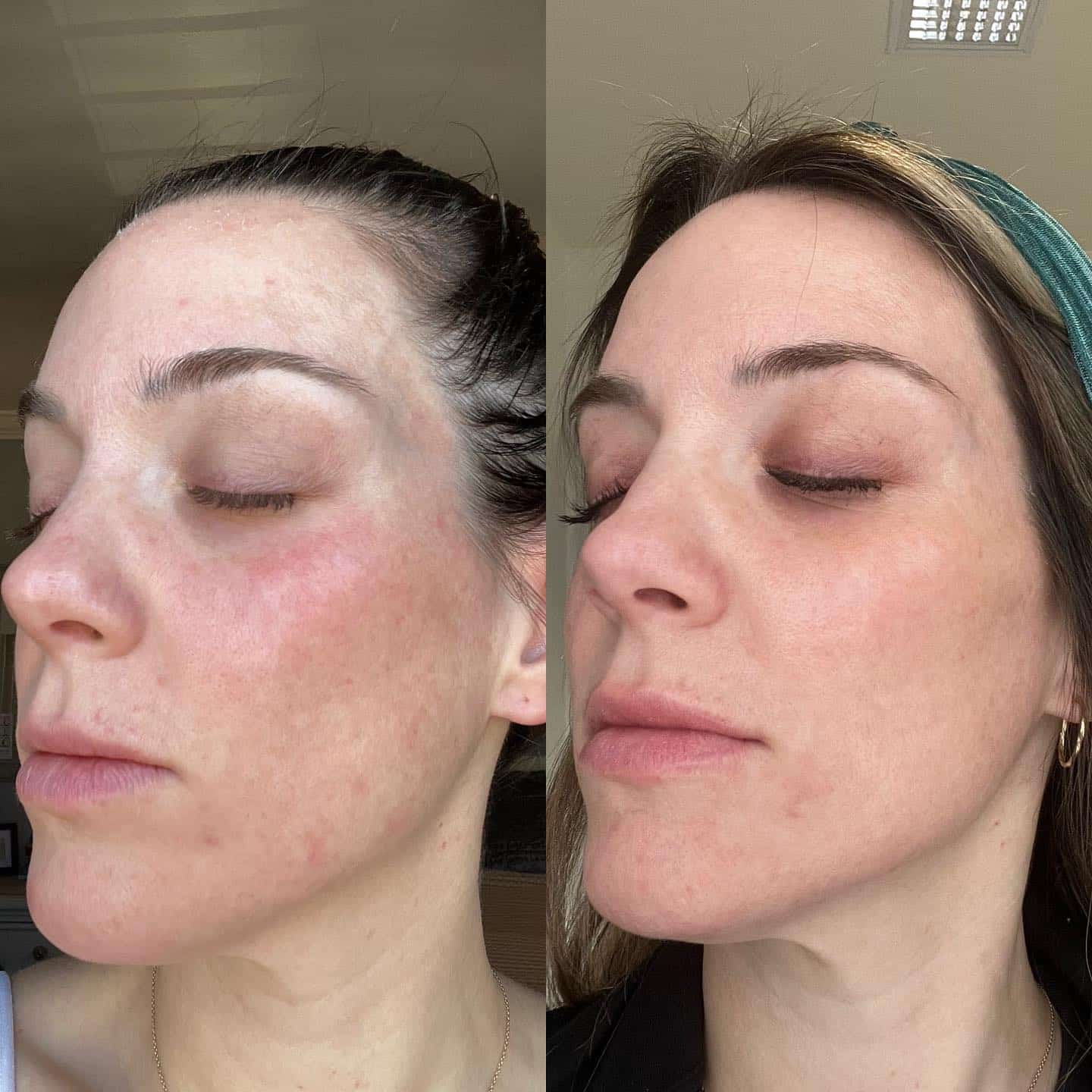A medium-strength, medical-grade chemical peel called a VI Peel helps reduce sun damage, wrinkles, hyperpigmentation, melasma, and uneven skin tone, texture, and dullness. In addition, VI Peel helps reduce pore size and addresses acne and acne scars. Younger skin without any obvious indications of age can potentially benefit from using VI Peel as an anti-aging treatment. In order to make room for smoother, more radiant skin, the VI Peel removes both the epidermis, or top layer of skin, and the topmost portion of the underlying dermal layers.
VI Peel
This virtually painless chemical peel helps improve the tone, texture and clarity of the skin while providing several anti-aging benefits. It is safe for all skin types and ethnicities. For optimal results, we recommend a series of 3-4 VI Peels.
A unique combination of salicylic acid, phenol, vitamin C, trichloroacetic acid (TCA), and retinoic acid makes up the VI Peel recipe. is safe and effective on all skin types and can be used on the face, neck, chest, arms, back and legs. It is a virtually painless treatment that requires no skin preparation and has little downtime.
- Improve the tone, texture and clarity of the skin.
- Reduce or eliminate age spots, freckles and hyperpigmentation, including melasma.
- Soften fine lines and wrinkles.
- Reduce acne and scarring from acne.
- Stimulate the production of collagen, for firmer, more youthful skin.
VI Peel is a blend of TCA or trichloroacetic acid, retinoic acid, salicylic acid, phenol, and vitamin C which work together to safely remove the damaged layers of the skin. Depending on which Vi Peel is used other ingredients may include hydroquinone, kojic acid, benzoyl peroxide and hydrocortisone. VI Peel promotes cellular turnover and refines the surface layer of the skin for a smoother, firmer, clearer and more youthful appearance.
Plasma IQ Pen
Plasma IQ is the latest advancement in aesthetics that delivers focused, controlled plasma energy to safely and effectively create micro injuries on the skin, renewing and restoring it. Microbeams of plasma are leveraged in a focused energy treatment, resulting in tightening and retraction of the skin tissues through controlled skin damage.
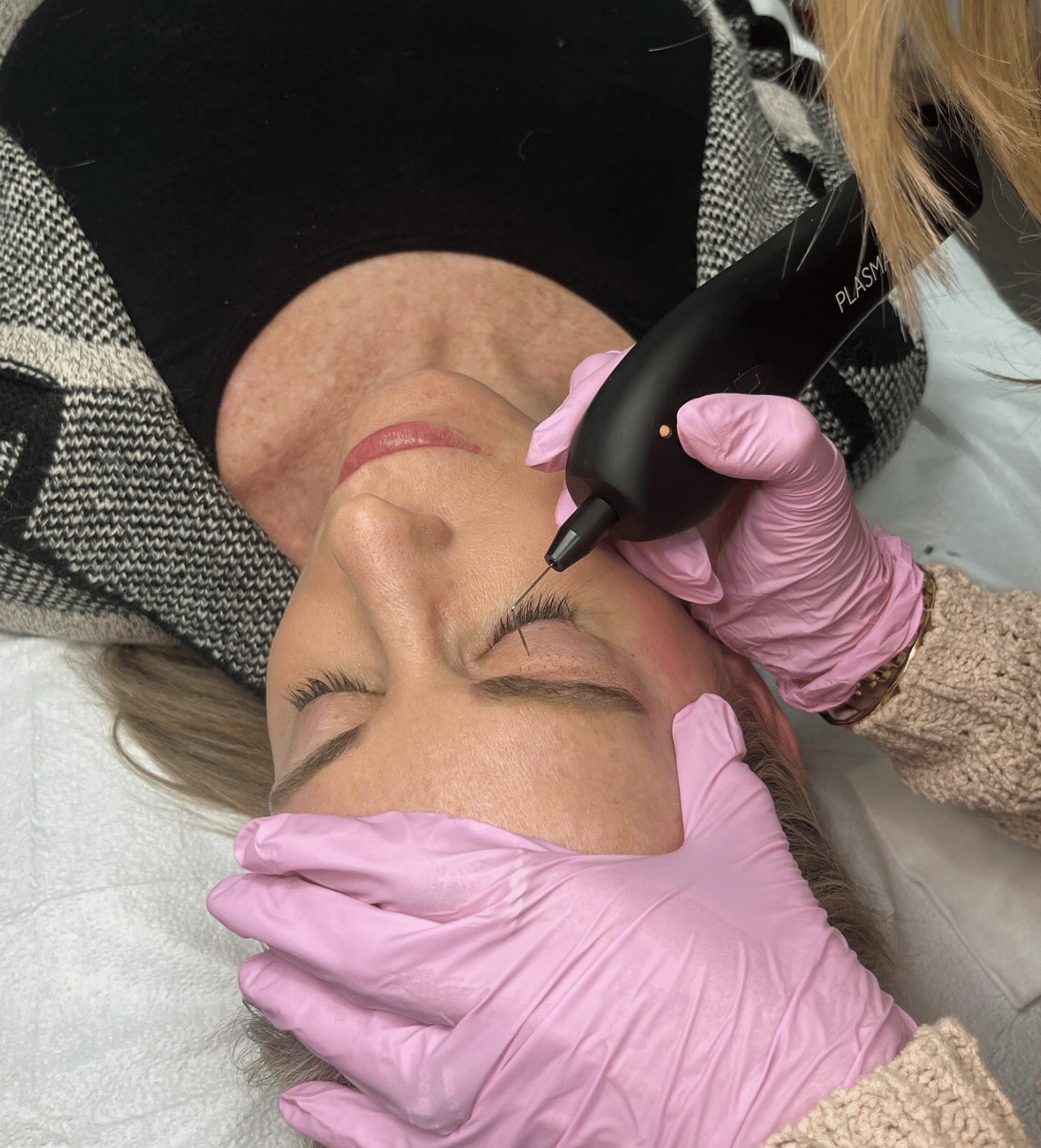
Safe, Quick and Effective
- Plasma IQ has a low risk of side effects. Extreme device precision and controlled energy settings limit the damage of surrounding skin, reduce downtime and improve healing.
- Plasma IQ treatment can be performed in-office in as little as 30 minutes, depending on the area(s) treated.
- Two levels of energy allow for safe and effective treatments for a variety of indications and areas. Plasma IQ delivers the precise amount of energy desired using the high (950V) or low (650V) settings during treatment.
SeruGLOW
SeruGLOW is an anti-aging solution that helps reduce the appearance of fine lines and beautify the skin.
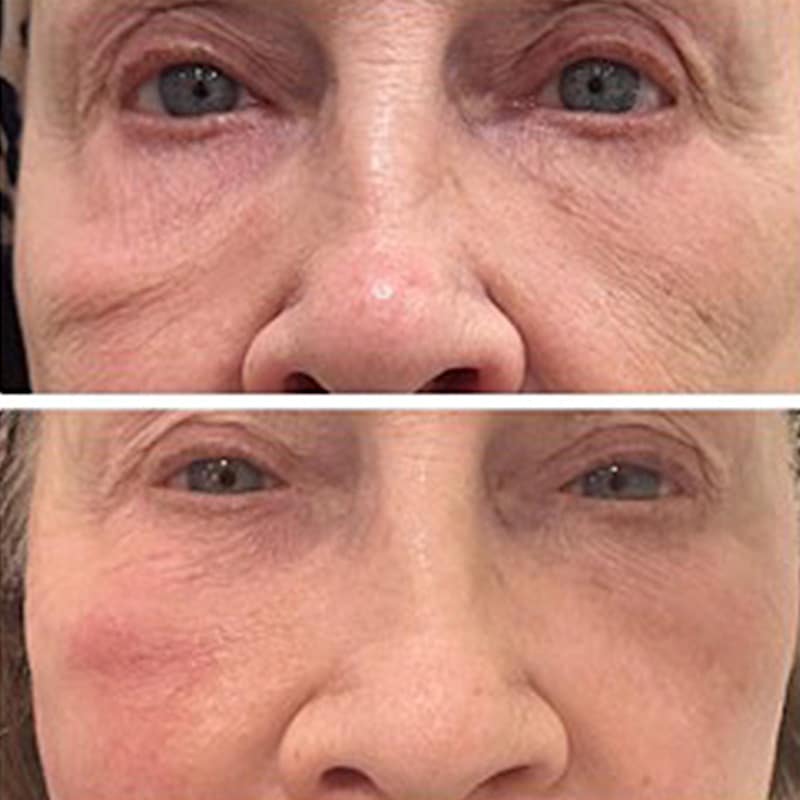
What is SeruGLOW?
SeruGLOW is a personalized skin revitalization system prescribed and administered by an aesthetic specialist that rejuvenates the overall appearance of the skin.
How Does SeruGLOW work?
SeruGLOW uses an innovative technology that allows providers to reach into the outer layer of the skin to safely rejuvenate the overall appearance of the skin. The needle head contains 20 needles, each being 0.13mm in diameter, smaller than a single hair strand, and electroplated in 24 karat gold. These small needles allow for a more comfortable treatment experience.
What are the benefits of SeruGLOW?
- Rejuvenates the skin to improve the skin’s overall appearance
- Improves skin’s overall tone and texture
- Encourages the skin’s natural glow
- Treatment typically under 15-30 minutes, depending on the area(s) treated
- Minimal downtime
Vampire Facial
The Vampire Facial, also known as Platelet-Rich Plasma facial or therapy, is a cosmetic skin care treatment that has gained popularity for its potential to rejuvenate the skin and improve its texture and appearance.
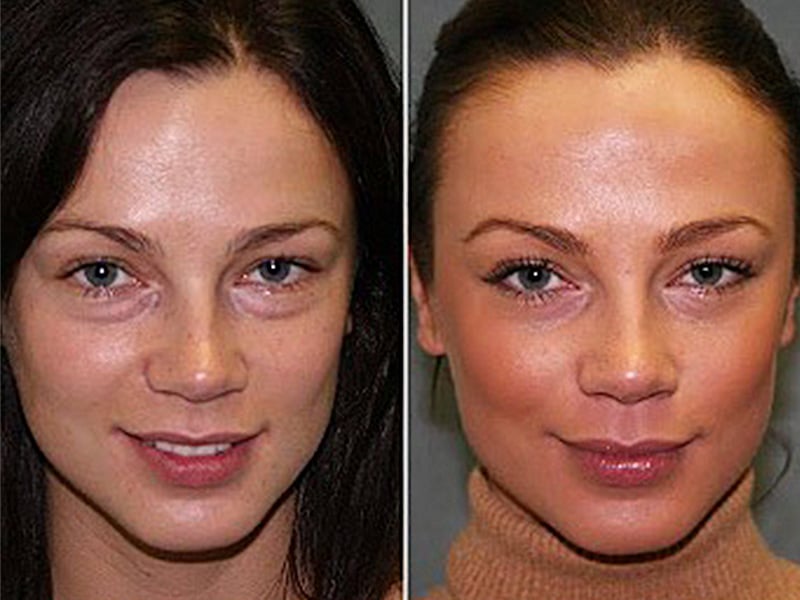
What is a Vampire Facial, and how does it work?
The Vampire Facial involves extracting a small amount of the patient’s blood, which is then processed to isolate platelet-rich plasma. The platelet-rich plasma is then applied topically or injected into the skin. Platelet-rich plasma contains growth factors that stimulate collagen production, promote tissue repair, and improve skin texture and tone.
What are the benefits of a Vampire Facial?
- Improved skin texture: Platelet-rich plasma stimulates collagen production, leading to smoother, firmer skin and a more even complexion.
- Reduced fine lines and wrinkles: By promoting collagen synthesis, a Vampire Facial can help diminish the appearance of fine lines and wrinkles.
- Enhanced skin rejuvenation: Platelet-rich plasma therapy can improve skin elasticity, reduce hyperpigmentation, and enhance overall skin quality, resulting in a more youthful appearance.
- Natural-looking results: Since the procedure utilizes the patient’s own blood, the results of a Vampire Facial are typically natural-looking and compatible with the individual’s skin.
Is a Vampire Facial painful?
The Vampire Facial is generally well-tolerated by most patients. The procedure may involve mild discomfort during blood extraction and platelet-rich plasma application, but topical numbing cream is often applied to minimize any pain or discomfort. Additionally, some practitioners may offer options for further pain management if needed.
How long do the results of a Vampire Facial last?
The duration of results from a Vampire Facial can vary depending on factors such as the patient’s skin condition, age, and lifestyle factors. Generally, patients may notice improvements in skin texture and tone within a few weeks of treatment, with results lasting anywhere from several months to over a year. To maintain the desired results, follow-up treatments may be recommended as needed.
SkinPen Microneedling
SkinPen microneedling is a minimally invasive cosmetic procedure designed to improve the skin’s texture, tone, and overall appearance. It involves the use of a medical-grade device called SkinPen to create controlled micro-injuries on the skin’s surface, stimulating the natural healing process and promoting collagen and elastin production.
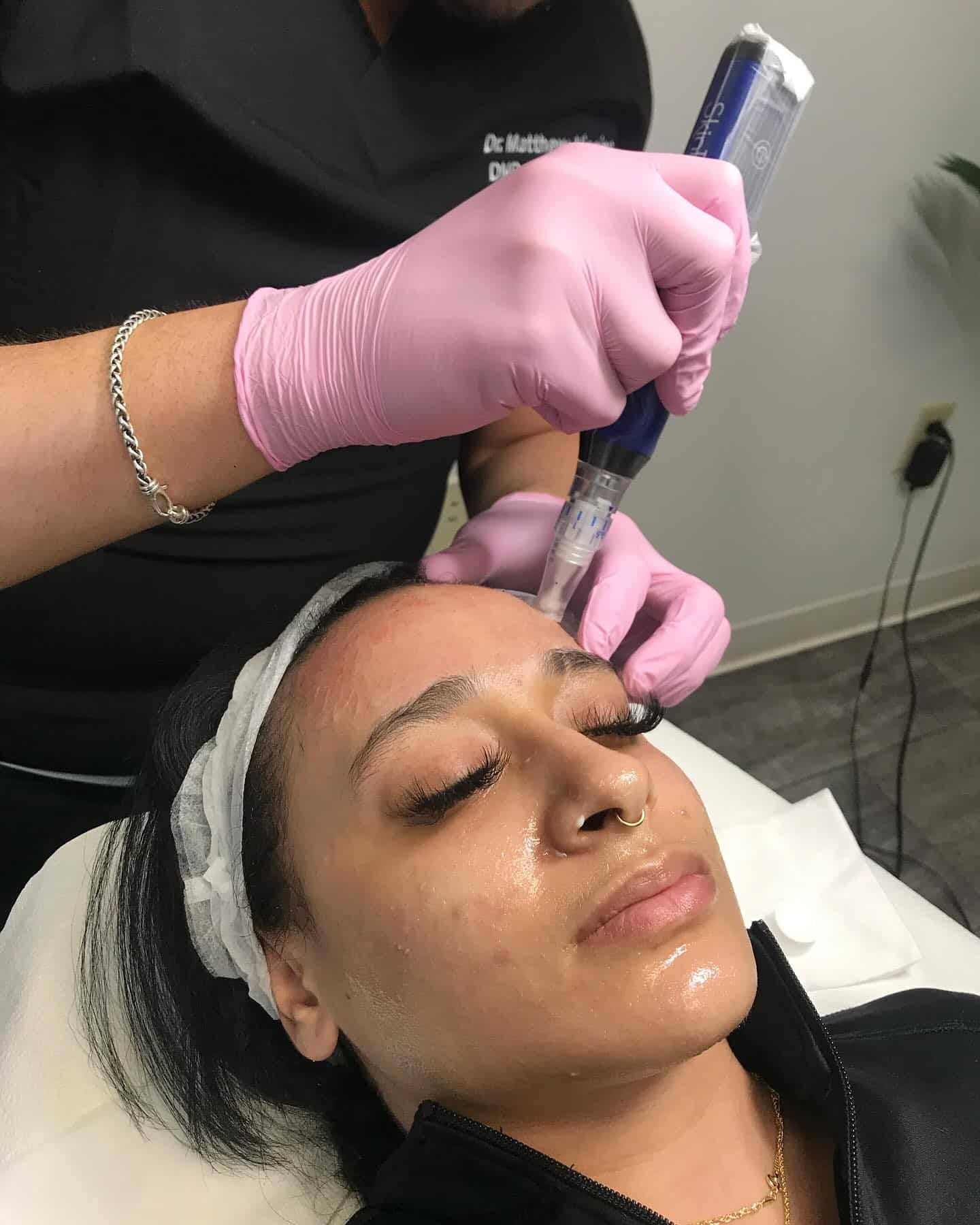
What is SkinPen microneedling, and how does it work?
SkinPen microneedling is a minimally invasive cosmetic procedure that involves the use of a device equipped with fine needles to create controlled micro-injuries in the skin. These micro-injuries stimulate the body’s natural healing process, leading to increased collagen and elastin production, which helps improve skin texture, tone, and firmness.
What are the benefits of SkinPen microneedling?
- Improved skin texture: SkinPen microneedling can help reduce the appearance of fine lines, wrinkles, acne scars, and other textural irregularities, resulting in smoother and more even-looking skin.
- Enhanced skin firmness: By promoting collagen and elastin production, SkinPen microneedling can improve skin elasticity and firmness, leading to a more youthful and rejuvenated appearance.
- Minimal downtime: SkinPen microneedling is a minimally invasive procedure that typically involves minimal downtime. Most patients can resume their normal activities within a day or two after treatment, although some redness and mild swelling may occur.
- Safe and effective: SkinPen microneedling is a safe and effective treatment option for individuals of all skin types and tones. It can be used to address various skin concerns, including aging skin, acne scars, uneven skin tone, and more.
Is SkinPen microneedling painful?
Most patients report only mild discomfort during SkinPen microneedling. The procedure typically involves the use of a topical numbing cream to minimize any discomfort. Additionally, the SkinPen device is designed to deliver controlled micro-injuries with minimal discomfort, making the procedure well-tolerated by most individuals.
How many SkinPen microneedling treatments are needed, and when will I see results?
The number of SkinPen microneedling treatments required varies depending on factors such as the specific skin concerns being addressed, the severity of the condition, and individual response to treatment. In general, a series of three to six treatments spaced about four weeks apart may be recommended for optimal results. Some improvement may be visible shortly after each treatment, but the full effects of SkinPen microneedling typically develop over several weeks as collagen remodeling occurs. Regular maintenance treatments may be recommended to maintain the desired results over time.

